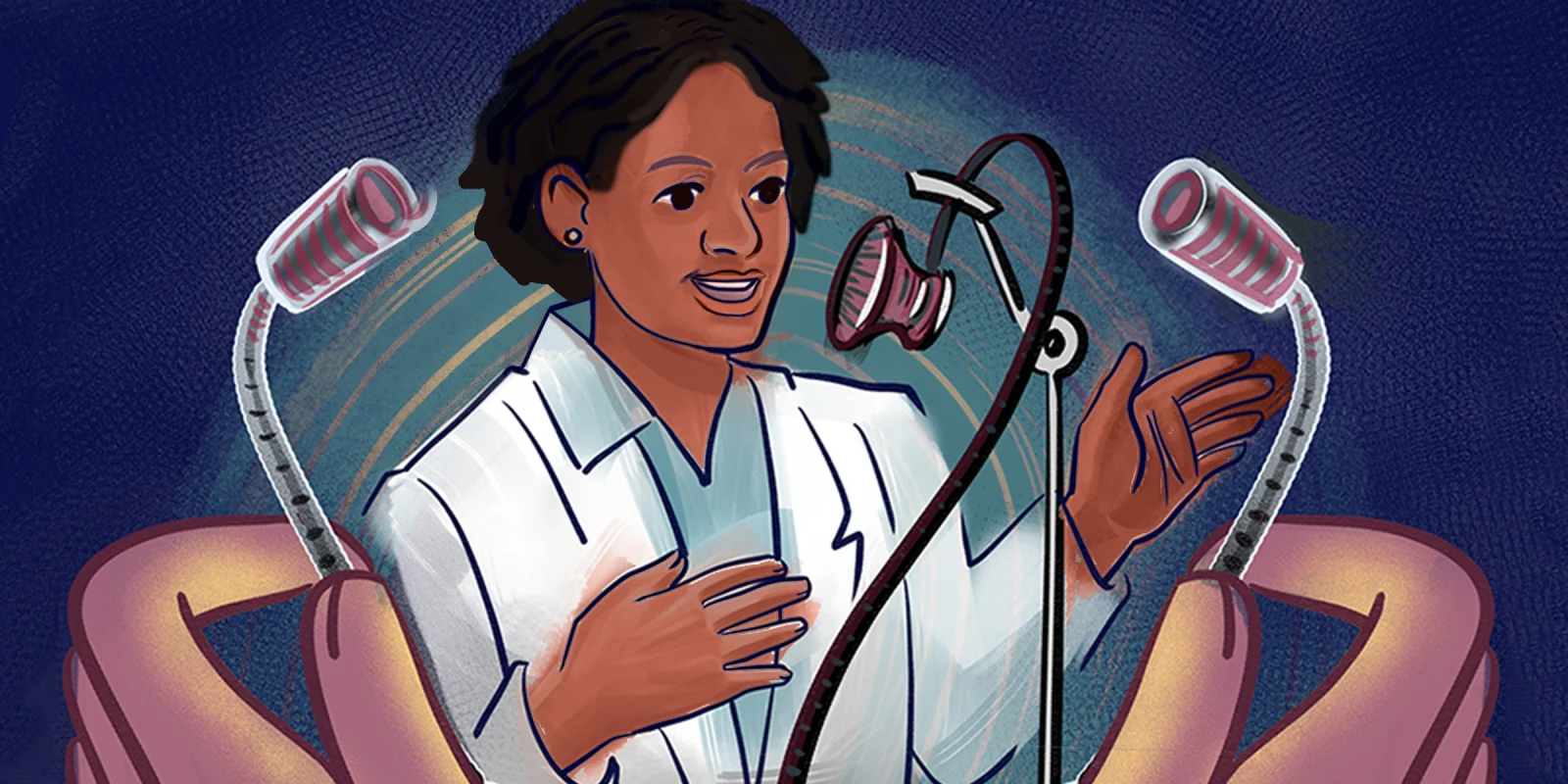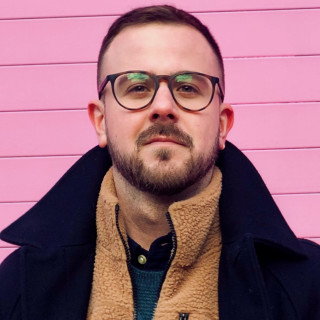The field of developmental-behavioral pediatrics is small, but mighty: A subspecialty of pediatrics that recognizes the multifaceted influences on the development and behavior of children, addressing them through a strength-based approach that optimizes functioning, it comprises only 800 board-certified developmental-behavioral pediatricians in the U.S. One of these is Adiaha Spinks-Franklin, MD, president of the Society for Developmental and Behavioral Pediatrics and the society’s founding co-chair of its Diversity, Equity, and Inclusion Committee.
Doximity spoke with Dr. Spinks-Franklin to learn more about how developmental-behavioral pediatricians can play a crucial role in bridging gaps in care and treatment among the pediatric population.
Doximity: Can you describe your work in developmental-behavioral pediatrics, and share the most impactful lesson you've learned while working in the field?
Adiaha Spinks-Franklin, MD: I worked at Texas Children’s Hospital for 17 years and now own a business called DBP Doc, PLLC, Developmental-Behavioral Pediatric Education, Consultation, and Training. The telehealth clinical arm is called Adoption and Beyond Developmental-Behavioral Pediatric Clinic. I provide telehealth developmental-behavioral pediatric evaluations to families of children ages 3-18 years in Texas and Oklahoma, and in-home DBP evaluations for families in the Oklahoma City metro area. I conduct telehealth guardianship and transition evaluations for families in Texas and Oklahoma. I also provide parent guidance, school testing review, and anxious kid coaching via telehealth to families living in any state. Finally, through Adoption and Beyond DBP Clinic, I offer physician-to-physician guidance to PCPs on managing the complex developmental disabilities and behavioral health conditions of patients living in Texas and Oklahoma.
An impactful lesson that I learned is that folks with disabilities usually have other overlapping marginalized and oppressed identities. There is overlap between race, disability, sex, gender identity, economic class, sexual orientation, nationality, body habitus, etc. Disabled kids, teens, and adults face multiple forms of discrimination because of their overlapping identities: ableism, racism, sexism, homophobia, xenophobia, gender discrimination, etc. Because of all of these complex, intersecting forms of discrimination, disabled people have some of the highest rates of being targeted for abuse, domestic violence, physical assault, sexual assault, underemployment, insecure housing, poverty, chronic illness, underinsurance, and the like. Therefore, being a developmental-behavioral pediatric social justice warrior means that, daily, I fight for disabled kids and with disabled adults to help dismantle these systems of oppression and help build systems of support.
Dox: What has been your very best moment working in developmental-behavioral pediatrics? How did it make you feel?
ASF: One experience I think about often is with an African American adolescent who was brought to the office by his mother for school concerns. The patient was 16 years old, but he had spent so many years in elementary school that he aged out of elementary school and was placed in ninth grade. When I conducted my evaluation, I found that his reading, math, and writing skills were only at a third-grade level. I sat with this young man and his mother, and we developed a plan of action to help him. I called and spoke with school officials and teachers about his needs. We found a private tutor at a local church who agreed to work with him. I did not see this young man again until four years later. He made an appointment for himself to see me. He said he wanted to thank me for believing in him and helping him in a way no one else had ever helped him. He then proceeded to tell me all he had done to work hard to perform well academically in high school and how private tutoring had helped him. He showed me that you can't give up on a kid because the odds are against them. That young man had serious resilience and found his own inner strength to beat all the obstacles. That was one of my proudest moments as a developmental-behavioral pediatrician.
Dox: What advice do you have for your fellow pediatrics colleagues?
ASF: Over time, [as pediatricians], we become burned out, have “compassion fatigue,” and wonder why we even go into medicine in the first place. Every day, find something in your patients that brings a spark of joy. I love and like my patients. I think of them as my kids. I want to see their strengths, so I enjoy having my patients do something or show me something they are proud of. I may have a patient sing me a song , perform a dance routine they made up, recite a rap they wrote , build something with Legos in the office, show a new karate move they learned (safely) in the dojo, bring me certificates or medals they earned in school, sports, or community activities, etc. I want my patients to know that I value them, and I see them. They are not broken. They have talents and gifts just like everybody else.
Dox: What book should be required reading for those working in developmental-behavioral pediatrics?
ASF: I recommend “The Spirit Catches You and You Fall Down” by Anne Fadiman. I read this book when I was a fellow in developmental-behavioral pediatrics 20 years ago. The book is a true story that shares the perspectives of an immigrant family and the physicians who treated their child in California. It addresses [what happens] when cultures collide in medicine and how to navigate these different understandings of health and disease. Medical culture is often in contradiction to the cultures of our families. Medical culture is arrogant, egocentric, and paternalist. Often, we physicians act as if we are the only expert in the exam room and do not respect or even acknowledge the expertise that patients have in their own bodies, families, and experiences. I feel that the book forces us to take the perspectives of the family so deeply, and how they are in direct conflict with the perspectives of the physicians. It opened my eyes to see how deeply baptized and committed I was to medicine and how I really had not yet learned to respect patients and families as experts in their own experiences. The lessons in this book are so apt for developmental-behavioral pediatricians in the ways that families perceive disability, parenting cultural styles, behavior challenges, and child development through a lens that differs greatly from our medical lens. We must partner with families to meet the needs of the child.
Dox: What gives you hope for the future of your field?
ASF: It is my hope that my subspeciality will one day be recognized as the backbone of pediatrics. Twenty percent of children and adolescents have a developmental delay, disability, and/or behavioral health concern. These are the most common concerns mentioned in general pediatric practices. There are only 800 board-certified developmental-behavioral pediatricians in North America, which means we are the unicorns of pediatrics. My hope is that, as our field becomes more widely known, we will become more valued as a subspecialty, and institutions and society will invest in our field and in our patients.
Dox: What would you tell someone considering developmental-behavioral pediatrics?
ASF: Learn as much as you can about expected child development and common child behaviors, and get as much experience as you can working with kids, both kids with disabilities and those without. Experiences can include caring for younger siblings or little cousins, babysitting, being a nanny, working in a childcare center, volunteering in the nursery or child classes at your religious house of worship. Have a love for kids and see their strengths and abilities. See children as full humans who deserve unconditional love and respect for who they are. Children are not little adults; children are children. Children are the butterflies of our species; adults are the caterpillars!
This interview has been condensed and lightly edited for style.
Illustration by April Brust







